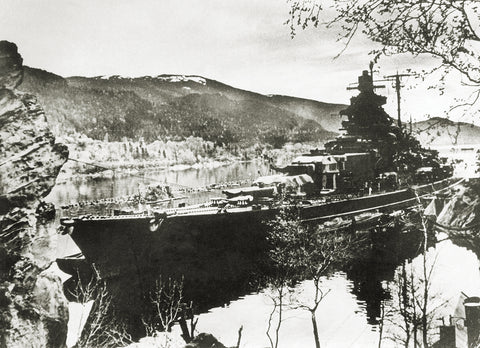
The Tirpitz Was Big, But Size Couldn’t Prevent the Battleship’s Destruction
Leave it to Adolf Hitler to build the largest battleship ever produced by a European power. In 1935, Hitler unilaterally renounced the Treaty of Versailles and began rebuilding Germany’s army, air force, and navy. His engineers proceeded to design two giant warships: KMS Bismarck , a 50,000-ton behemoth when fully loaded, commissioned in August 1940; after some modifications, Tirpitz followed in February 1941. Tirpitz was actually 2,200 tons heavier than its better-known sister ship.
Unfortunately for the Kriegsmarine, this effort coincided with the emergence of air power as a strategic tool in naval warfare. The British navy, with contributions from Fairey Swordfish torpedo bombers, sank the Bismarck on May 27, 1941.
In early 1942, Tirpitz anchored in Norway to guard against Soviet forays into the Arctic as well as any possible Allied invasion. But its most critical role was as a “fleet in being,” forcing the Allies to divert numerous ships to Scotland to counter the constant threat that Tirpitz presented. Tirpitz spent much of its existence evading Allied air and mini sub attacks in Norway’s fjords. Its only offensive operation came in September 1943, when it shelled Allied positions on the northern Norwegian island of Spitsbergen. On November 12, 1944, British “Tallboy” bombs from Royal Air Force Lancasters struck and sank Tirpitz near Tromsø, killing about 1,000 German sailors.
Scrap from the once-mighty ship was sold off in a postwar salvage operation that lasted 11 years, a final testament to Tirpitz ’s massive size.
